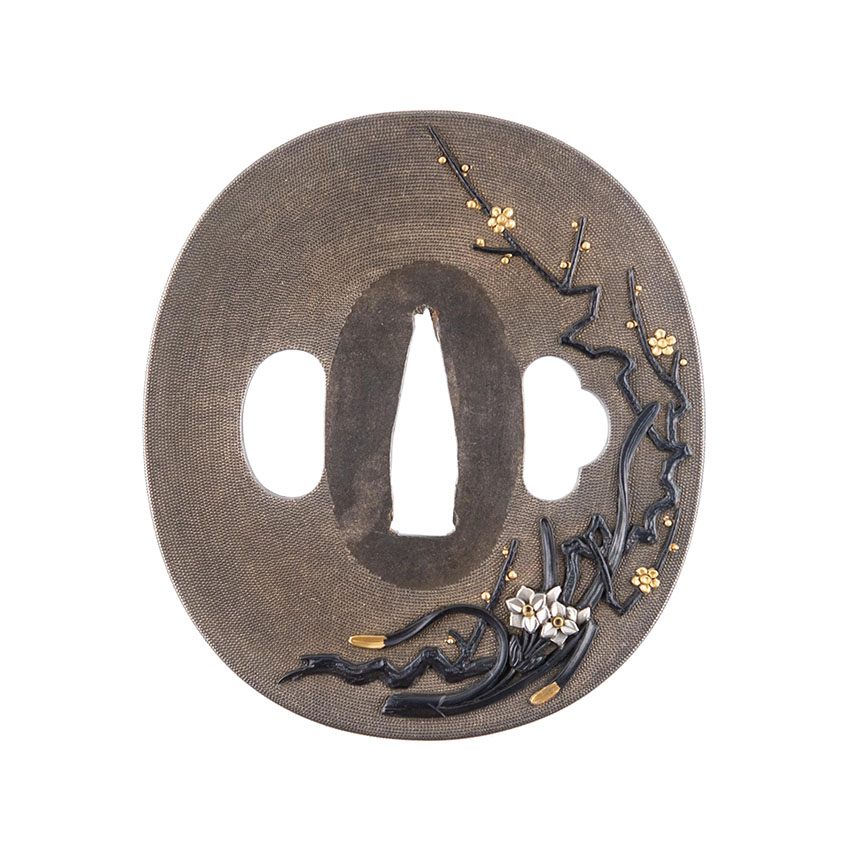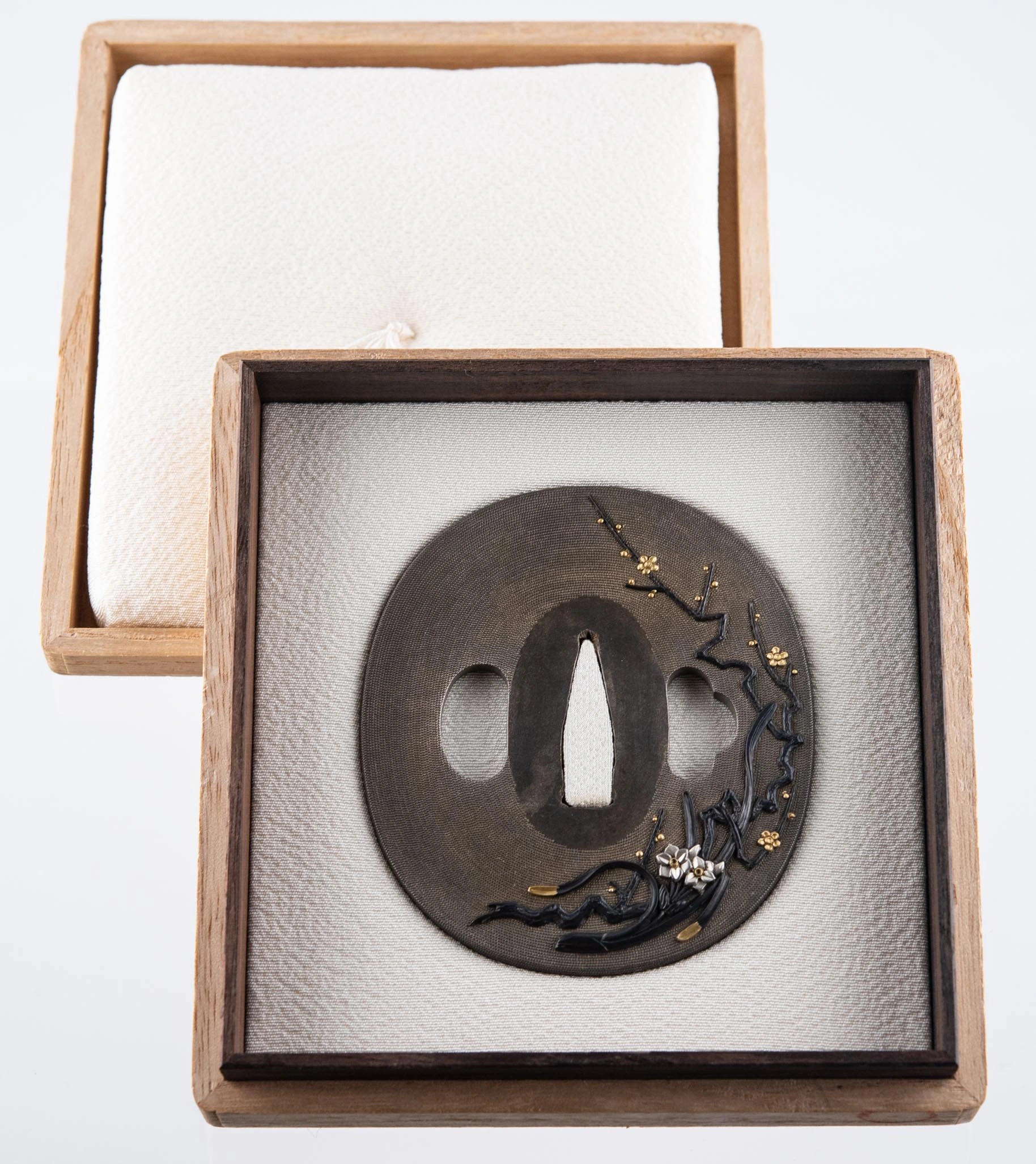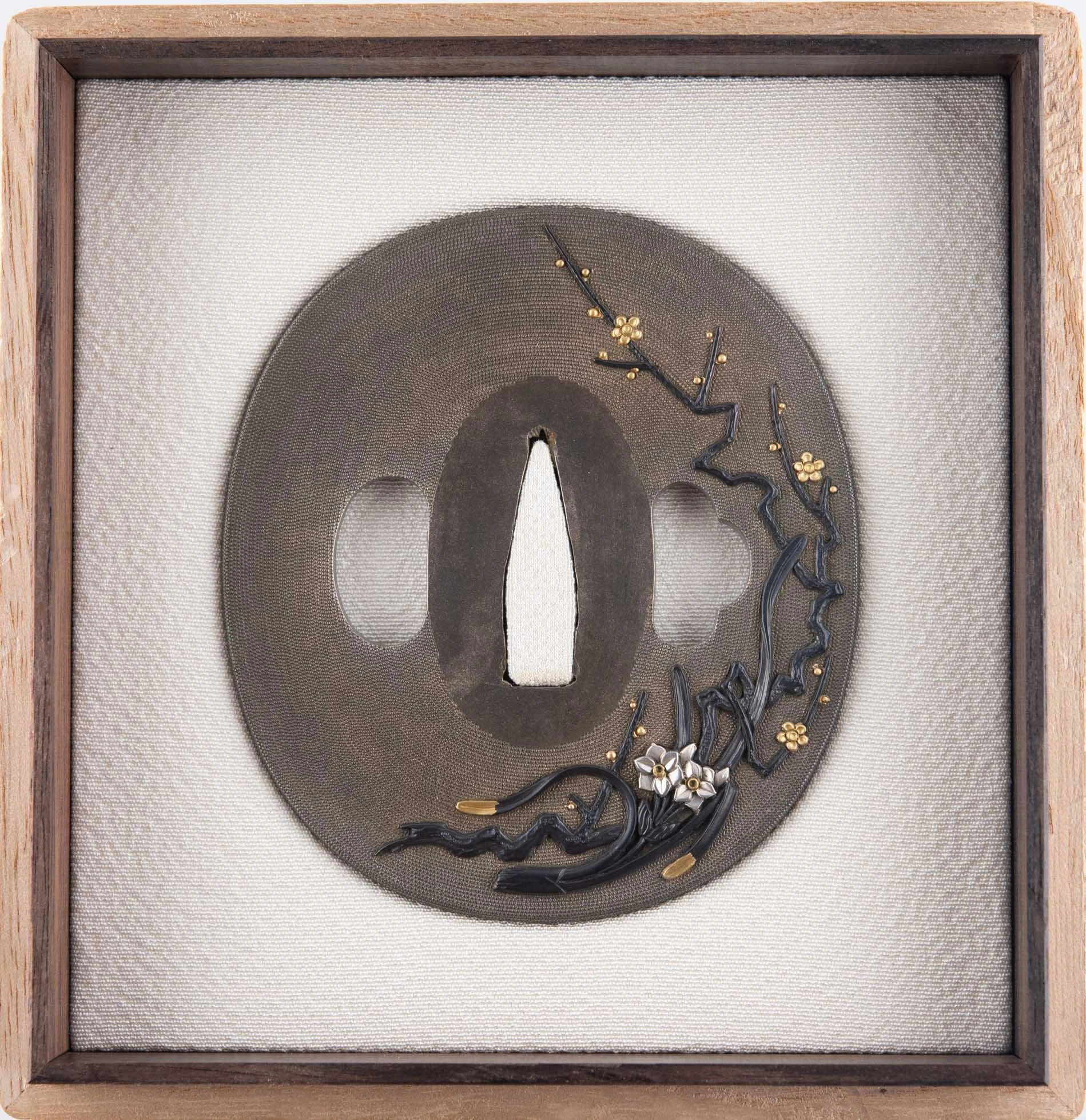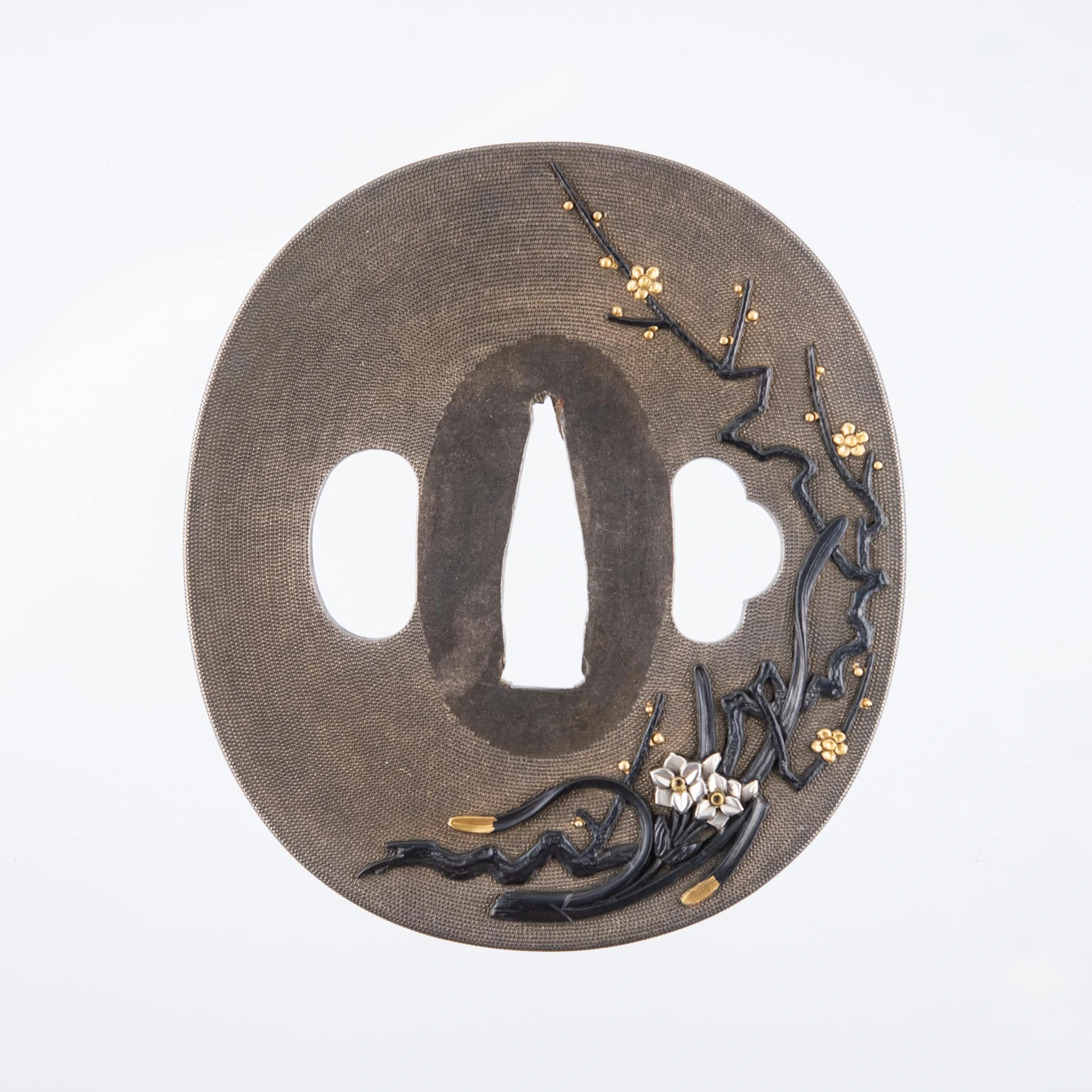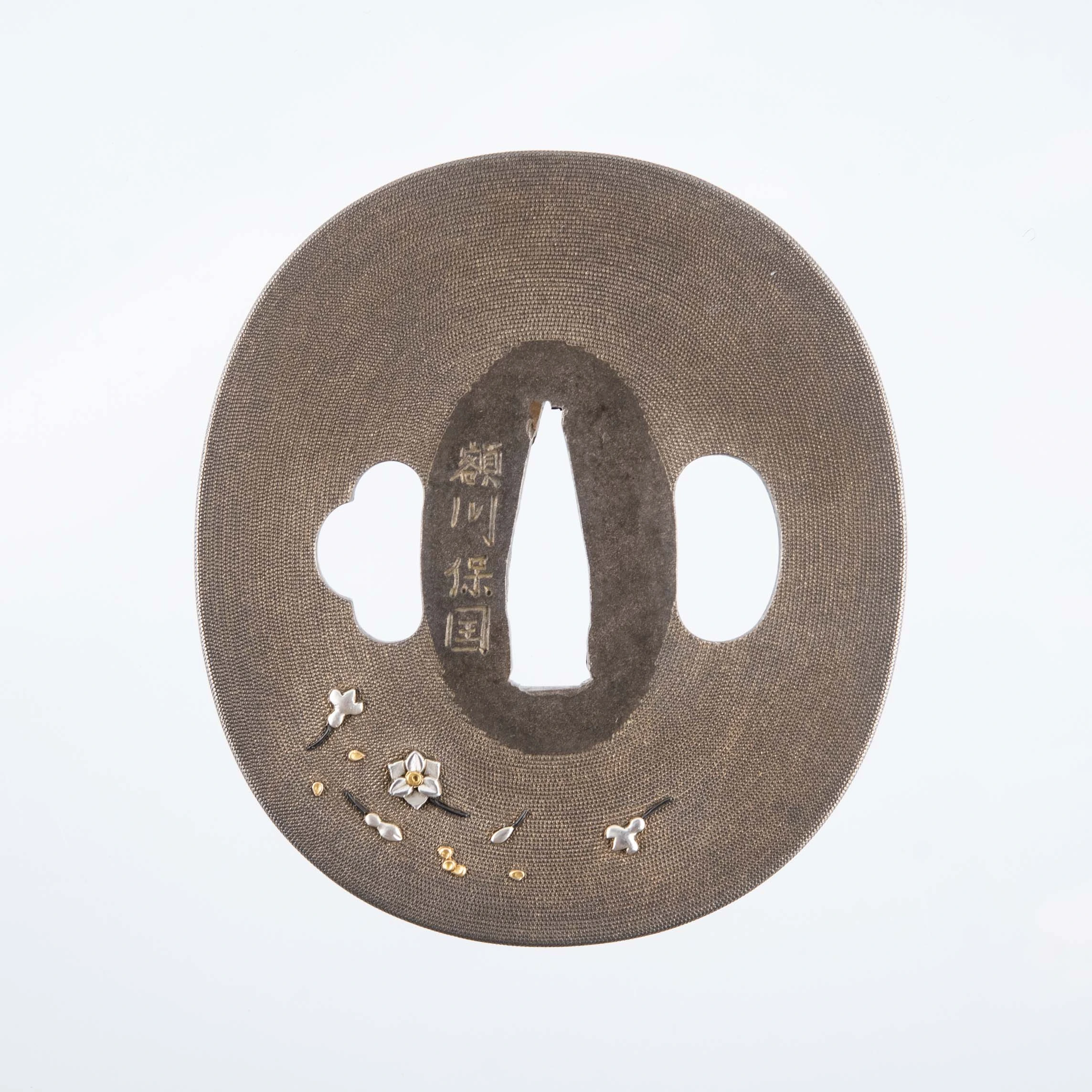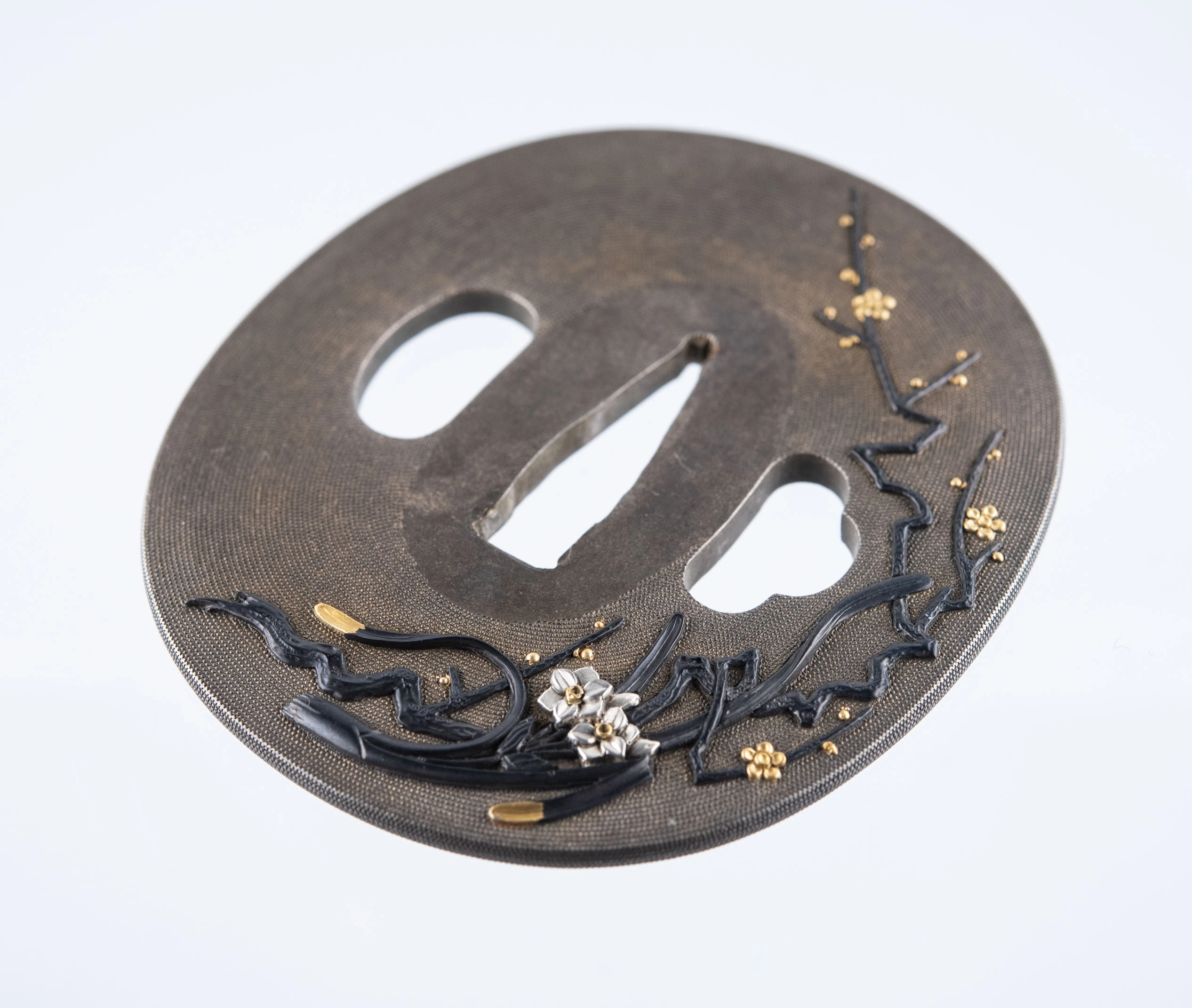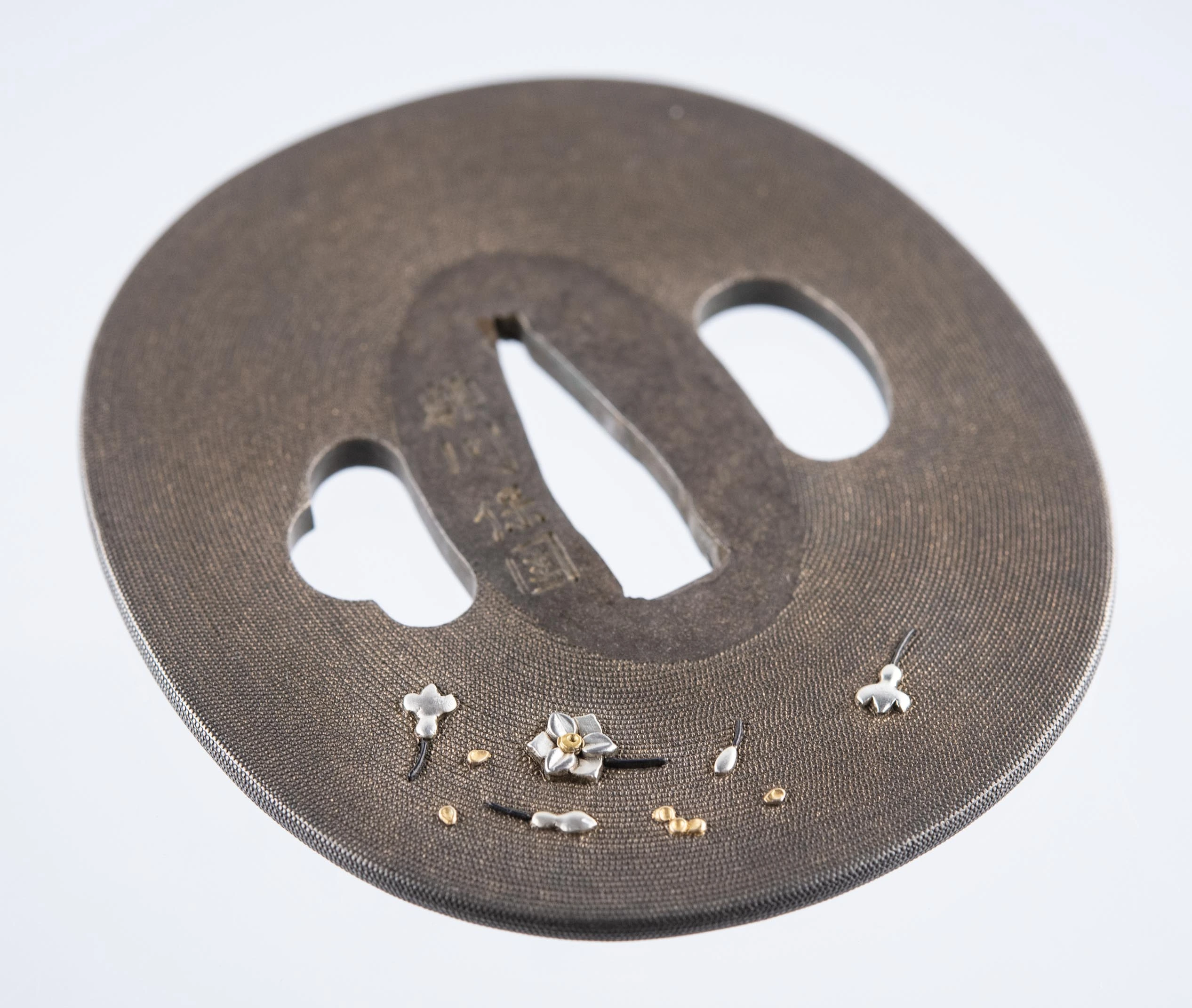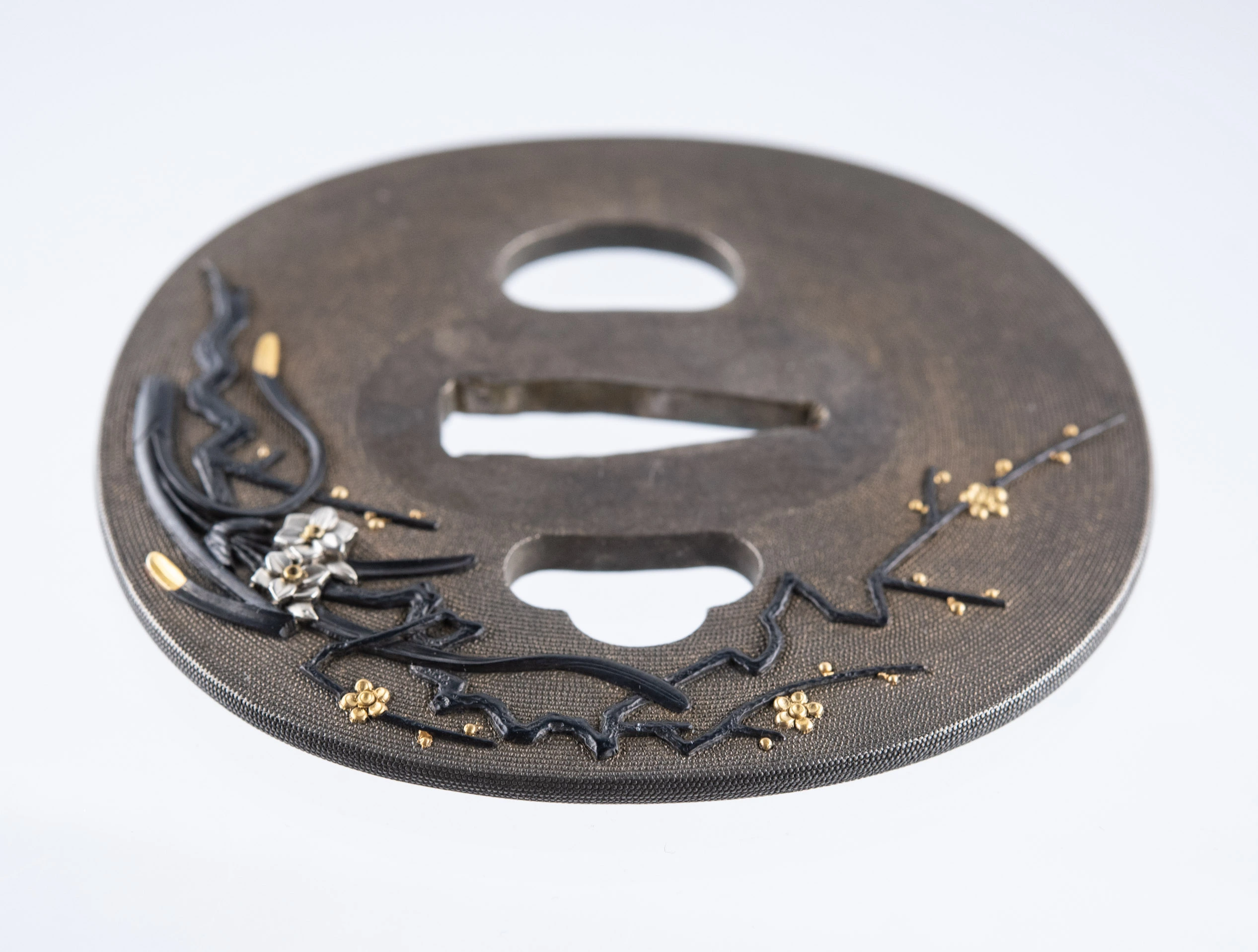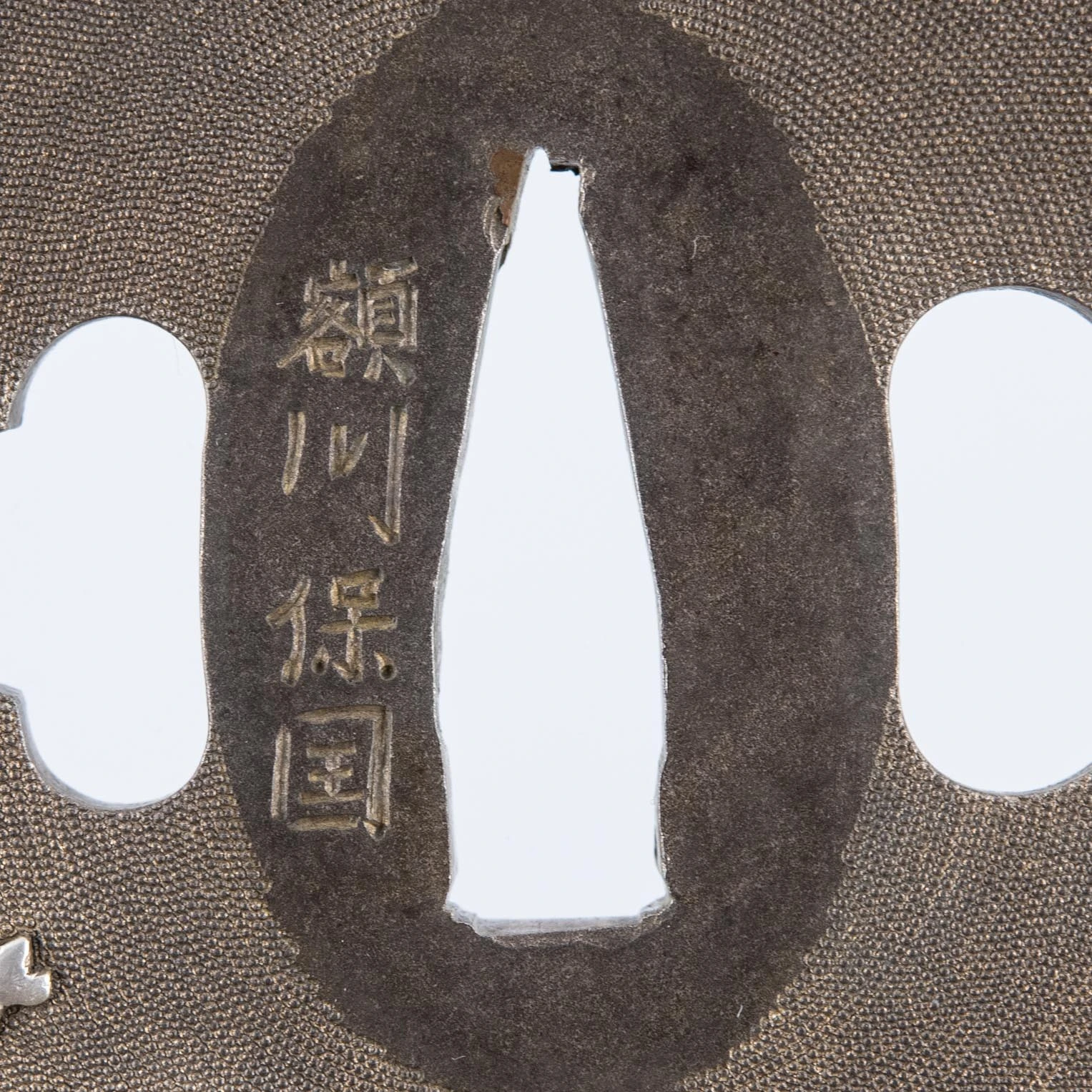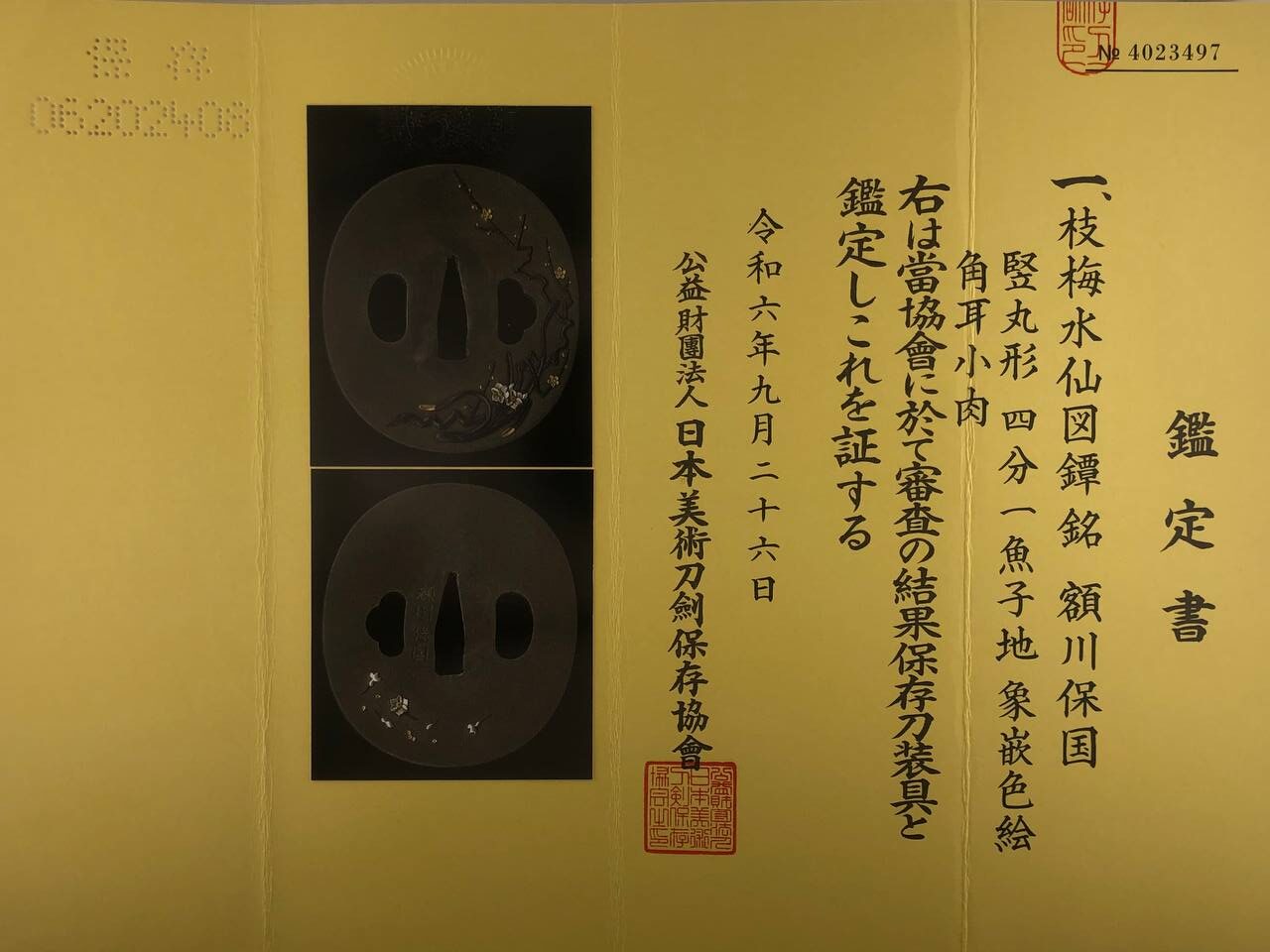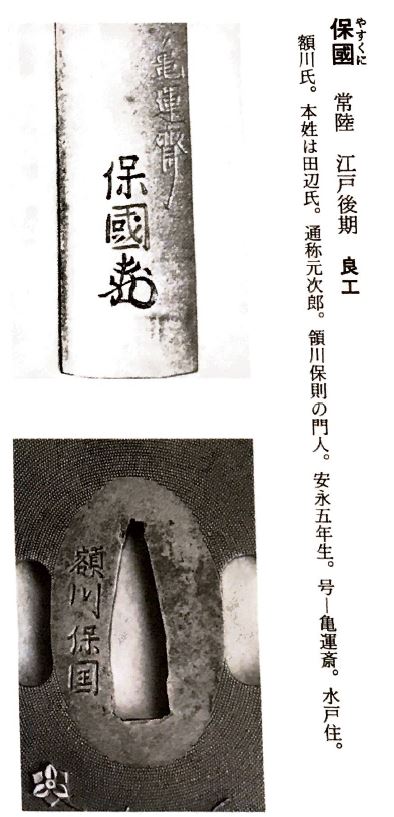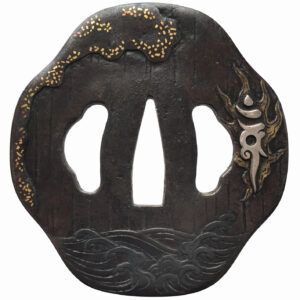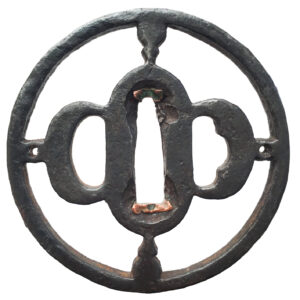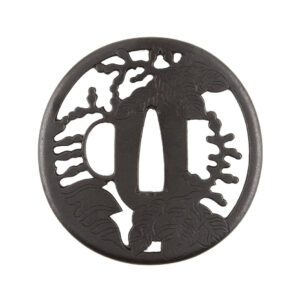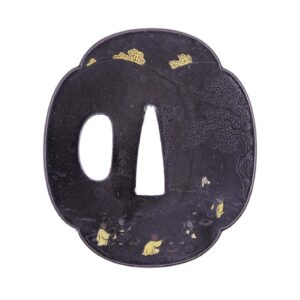We have here a very elegant Machibori Tsuba made and signed by Nukagawa Yasukuni. The base metal of this Tsuba is Shibuichi and the surface finish is a fine Nanako which also covers the rim of the Tsuba completely. It is rather rare to find Shibuichi Tsuba with a Nanako finish while this surface treatment is often used for pieces made from Shakudo. We might speculate that this is due to the difference in price of the base metal, as Shakudo contains gold and is thus more precious than Shibuichi which contains silver, maybe the higher material price would also justify a more expensive surface treatment (Nanako). Another reason might be that the Shibuichi patina is less stable than the Shakudo one, and creating a more complicated surface might also pose further challenge to create a heterogeneous surface colour. As we see in this Tsuba the colour ranges from a light grey to a greenish hue which give this Tsuba a very charming atmosphere.
The design shows a plum branch with golden blossoms and buds and a daffodil bouquet with silver blossoms, in Japanese called ‘Eda Ume Suisen’ (枝梅水仙). Both flowers herald the arrival of spring, with plum blossoms blooming slightly earlier and are messengers of the transition from winter to spring. Furthermore they represent elegance and purity being a symbol for simple yet refined beauty. They also stand for good fortune and stability, the plum blossom being resilient, the daffodils symbolising happiness. Overall they make a very harmonious combination.
The Nukagawa school was one of the main Mito Kinko schools in the late Edo period. Though a bit smaller and not as prolific as other schools like the Uchikoshi or Sekijoken for example, the Nukagawa artists have created quite valuable and beautiful art works carrying a characteristic style. The school was founded by Yasunori who himself studied under the Tamagawa school and was active around 1800. Nukagawa Yasukuni studied under Yasunori next to Yasuteru and Yasutoshi. His common name was Tanabe Genjiro and he used the artist name ‘Ki unsai’. All Nukagawa artists carried forth the Yasu Kanji from the founder (保). The pronounciation of this Kanji as ‘Yasu’ is quite rare. From Haynes we know that Yasukuni was 68 in 1843 which let’s us estimate his working period to around 1800 till 1850.
Works of Yasukuni have been part of famous collections such as the Baur and the Oeder collection.
This Tsuba is published in the Kinko Meikan, the standard reference book for Tosogu signatures by Kokubo Kenichi, as the reference signature for this artist (see photos).
It comes with an NBTHK Hozon certificate and a custom made box.
Size:
H: 76 mm
W: 68 mm
R: 3.2 mm
Sd: 3.2 mm

